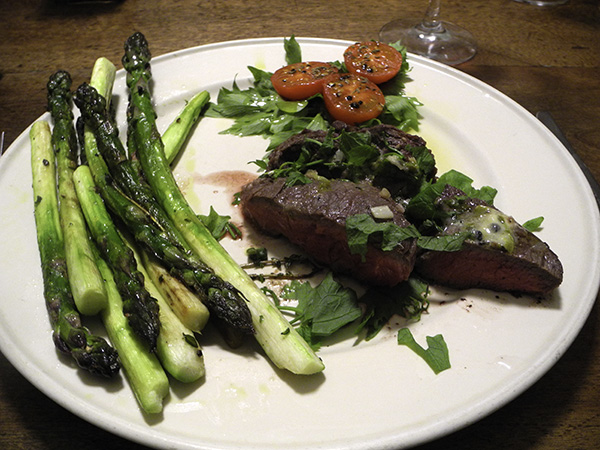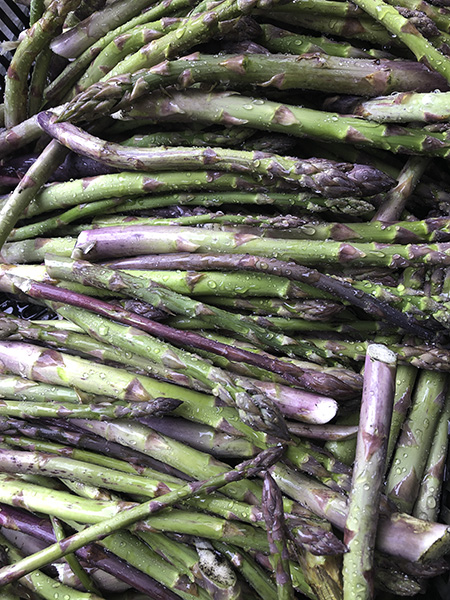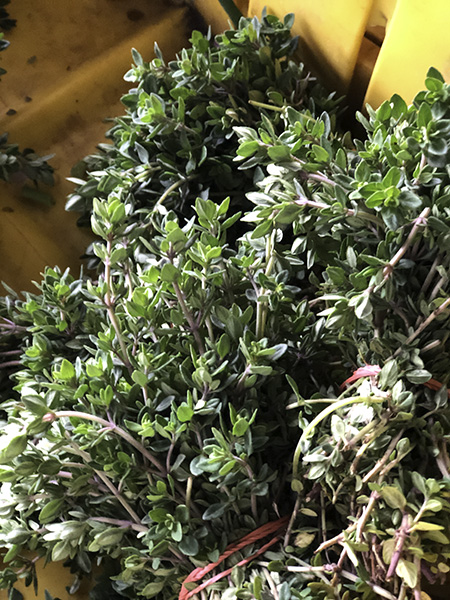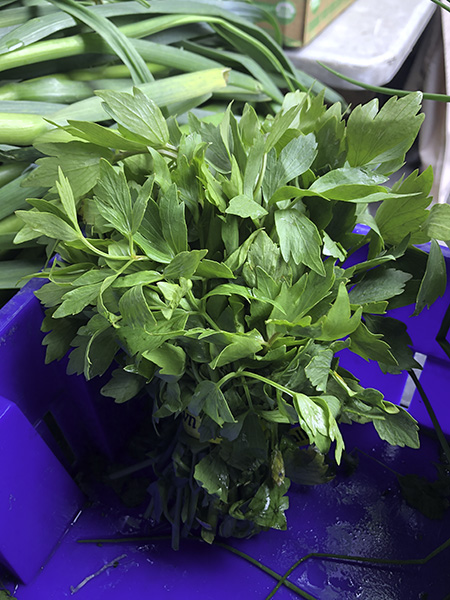
I wasn’t sure what to do. I knew it would taste great, for one thing, because it was water buffalo, but also because it was a chuck steak. What I wasn’t sure was how I should cook it.
Buffalo is leaner than beef, and so it needs less time and lower heat on the grill pan. Also, the color is and remains a lot redder than beef, so when it looks like an almost rare beef steak buffalo is actually medium-rare.
Then there was the fact that chuck steak, while really delicious, can be pretty tough if not cooked properly, and knowing what that means is key. I’m definitely not an expert, but I do know that the chuck comes from the large muscles of the shoulder, which do a lot of work, meaning they have a lot of connective tissue. This means that normally these cuts do best with slow, moist heat, like braising in the oven, or, if steaks, with a very quick cooking, like broiling, pan-frying, or pan-grilling.
It was a warm and humid evening, so I had decided against doing a reverse sear, which would seem to have been another possibility.
In the end, perhaps too optimistically, I chose to treat it more or less as I would usually cook a steak. That by itself may not have been a mistake, but I think I did make a mistake in not slicing it into sections once it had been cooked, to at least suggest a tenderness it was not expected to possess, but also for an aesthetic reason, since the steak, while delicious, did look just a little irregular on the plates.
- one 14-ounce water buffalo chuck steak from Riverine Ranch, washed, dried, covered in olive oil, sea salt, freshly ground black pepper, covered loosely in wax paper, allowed to rest on the counter for 2 hours, then dried, pan grilled above a medium-high flame, loosely covered with foil, for 2 and a half or 3 minutes, turned over, cooked for another 2 and a half minutes, removed with a finger test and an instant read thermometer suggested it was rare to medium rare, halved, visually checking for doneness, and a little thawed gorgonzola/fennel butter remaining from a previous meal spread on top, the steaks allowed to rest for 6 to 8 minutes, garnished with chopped garlic mustard from Norwich Meadows Farm


- seventeen thick asparagus spears (just under 22 ounces before heavy trimming) from John D. Madura Farms, their tough stem ends snapped off and most of the length of their stems peeled with a vegetable tool, rolled in a couple tablespoons of olive oil, a little salt, ground black pepper, and a large handful of thyme branches from Phillips Farms inside a large rectangular enameled cast iron pan, sautéed over medium high heat while continuing to frequently roll or turn them until they were beginning to brown (about 15 minutes), finished on the plates with a drizzle of Chelsea Whole Foods Market organic lemon

- three Backyard Farms Maine ‘cocktail tomatoes’ from Whole Foods Market, halved, seasoned with salt and pepper, placed inside a small tin-lined copper pan in a little olive oil above a medium flame until they had softened,, turning once, arranged on beds of olive oil-drizzled fresh lovage [image above], the last in the bucket at Norwich Meadows Farm a few day before, next to the steaks, the tomatoes sprinkled with slightly crushed, incredibly fragrant dried Semi di Finocchietto Ibleo [wild Sicilian fennel seed] from Flatiron Eataly
- the wine was a Portuguese (Bairrada) red, Sidonio De Sousa, Bairrada 2015, from Astor Wines
- the music was the album, ‘Johann David Heinichen: Dresden Concerti‘